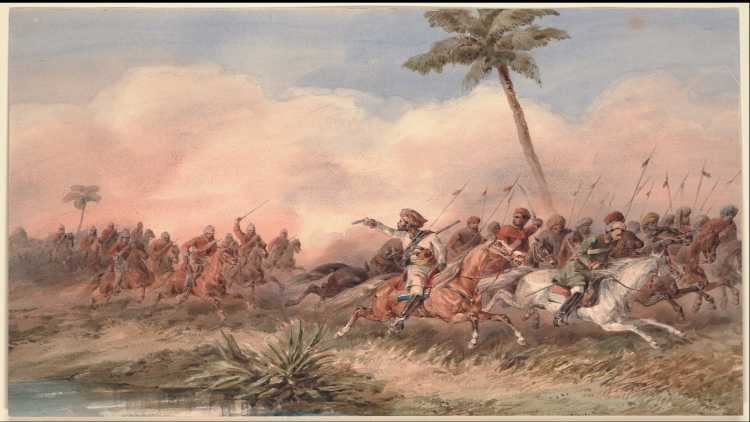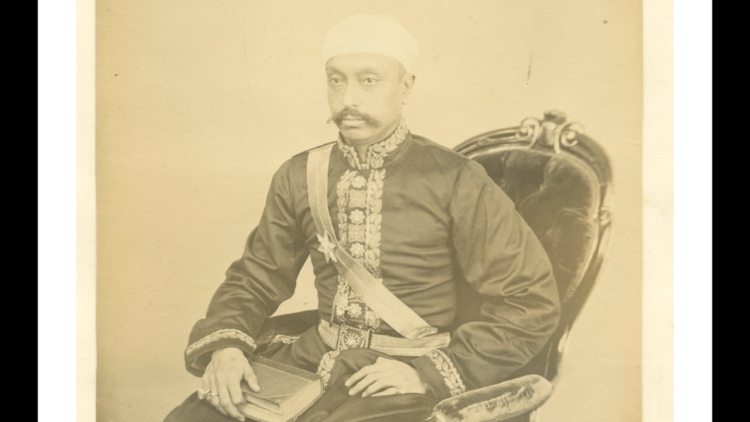
Ratna Chotrani/Hyderabad
Maulvi Alauddin became the first prisoner to be convicted and deported to the Cellular Jail in the Andaman and Nicobar Islands popularly known as the Kala Pani. The penal colony was designed by the British to break people in what became one of the darkest chapters in India’s struggle for freedom.
Maulvi Allauddin was one among the manykala pani inmates who were not only tortured but also endured a soul-destroying slave work during their incarceration.
Sajjad Shahid, General Secretary, Centre for Deccan Studies, says on July 17, about 500 people, headed by Maulvi Allauddin and Turrebaz Khan took out a protest March from Mecca Masjid to the British residency. The protesters attacked the residence and the British troops opened fire in retaliation. The protesters put up a stiff fight for several hours but were forced to retreat after. Turrebaz Khan was arrested and Maulvi Alauddin managed to escape.
Later he was captured perhaps on a tip-off as there was a reward of Rs. 5,000, a huge sum those days, and transferred to the cellular jail. He was sent from Hyderabad on 28 June 1859.

Sir Salar Jung, Prime Minister of Nizam of Hyderabad
Maulvi's right hand was paralyzed by a gunshot wound during the attack on the residence. He suffered a sword wound in the shoulder and forehead. Although there were repeated requests that he must be released from jail on the grounds of ill-health and good behaviour all such pleas were rejected.
He died in 1889 in the cellular jail.
Shahis says the 1857 revolt was neither the first nor the last rebellion against the British, but at this stage, the movement gained prominence, as it manifested as a national movement The Wahhabi’s, were deep into this movement. Unfortunately, this part of Hyderabad’s history has not been registered. Many freedom fighters and poets whose contributions to India’s independence remain unrecognized to date. Even the present Government does not know the History of Hyderabad, he adds.
Sajjad Shahid says lots need to be done and these freedom fighters should be recognized, There was a road in Hyderabad named after Turebaz Khan but the signboards have vanished. Besides, not many people are aware of Maulvi Alauddin for there is a memorial in his name in the city.
The story of Maulvi Alauddin is a passionate struggle to free one’s country from a foreign rule. Sajjad Shaid says his tragic tale clearly indicates the British were convinced of his strength and character.
According to a noted historian and archivist Dr Syed Dawood Ashraf, a collection of documents found in a file at the State Archives and Research Institute throws light on the miseries Maulvi Alauddin went through. Until this file was located, it was believed that he died in 1884. But documents revealed that he reached Port Blair in 1860 and lived there up to 1889. The file contains a letter which Maulvi Alauddin wrote in Persian to the British government on February 1, 1889, stating how he, unlike other life convicts in Port Blair who are released on completion of 20 years, wasn't freed despite not violating any rule and receiving commendation letters from almost all officers for his 'good conduct.'
He stated that the Indian (British) government had wanted to release him and wrote in that connection to the government of Hyderabad State. But the then prime minister Salar Jung I rejected the recommendation. Later in 1886, Home Secretary Alexander Mackenzie while visiting Port Blair met Maulvi Alauddin and came to know of his case. He promised to follow up on it, on returning to Kolkata, which he did. The recommendation to release Maulvi Alauddin was cleared by the Governor-General and his Council and sent to Hyderabad State. Once again Salar Jung turned it down. When Maulvi Alauddin made another appeal to the British government he was told that it cannot be done without the consent of Hyderabad State.
The Maulvi's right hand had been paralysed owing to a gunshot injury he suffered during the Residency Attack. He had also suffered sword wounds on his shoulder and forehead. During his imprisonment, he lost his eyesight and was inflicted with rheumatics and a double inguinal hernia. In later years he could not walk without support.
Given his physical condition, he wanted to spend his last days in Hyderabad but his repeated requests for release were turned down by Salar Jung I and later by prime minister Asman Jah. The annexure to his last letter to the Hyderabad State had eight medical certificates on his deteriorating health and 44 testimonials from different British officials declaring that he was an honest man. However, it was not to be as he was let down by his own people.
Qudesh Rani, a noted historian recalls her visit to the Andaman Nicobar with a freedom fighter Comrade Goswami and said that some poems are ingrained in the walls with charcoal a testimony of RSS Veer Savarkar being jailed but sadly there is no other evidence of Maulvi Alauddin and other freedom fighters it has withered away with time. These testimonies should have been preserved. Much later the Government made the jail an iconic historical monument she says.
She said it is unfortunate that not much is written about these freedom fighters nor the Government has done anything to recognize them to date.
Maulvi Alauddin wanted to spend his last days among his people. Yet, his wish wasn't granted. Maybe a century and a quarter later, the Government can at least give him his due place in history and create some icons in his memory.
They rightly deserve a standing ovation and are a true inspiration for all of us. she adds.
